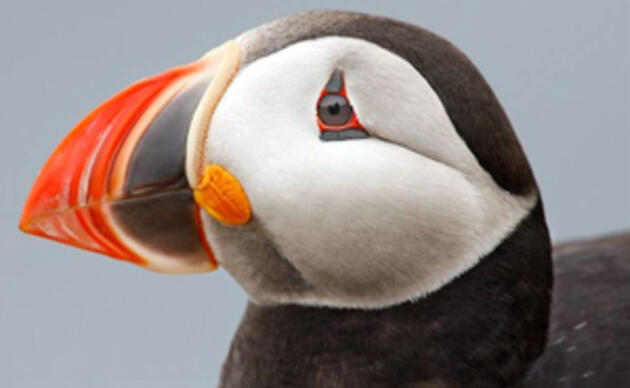Seabird Island News - Vol. 10 - 03 July 2024

Terns
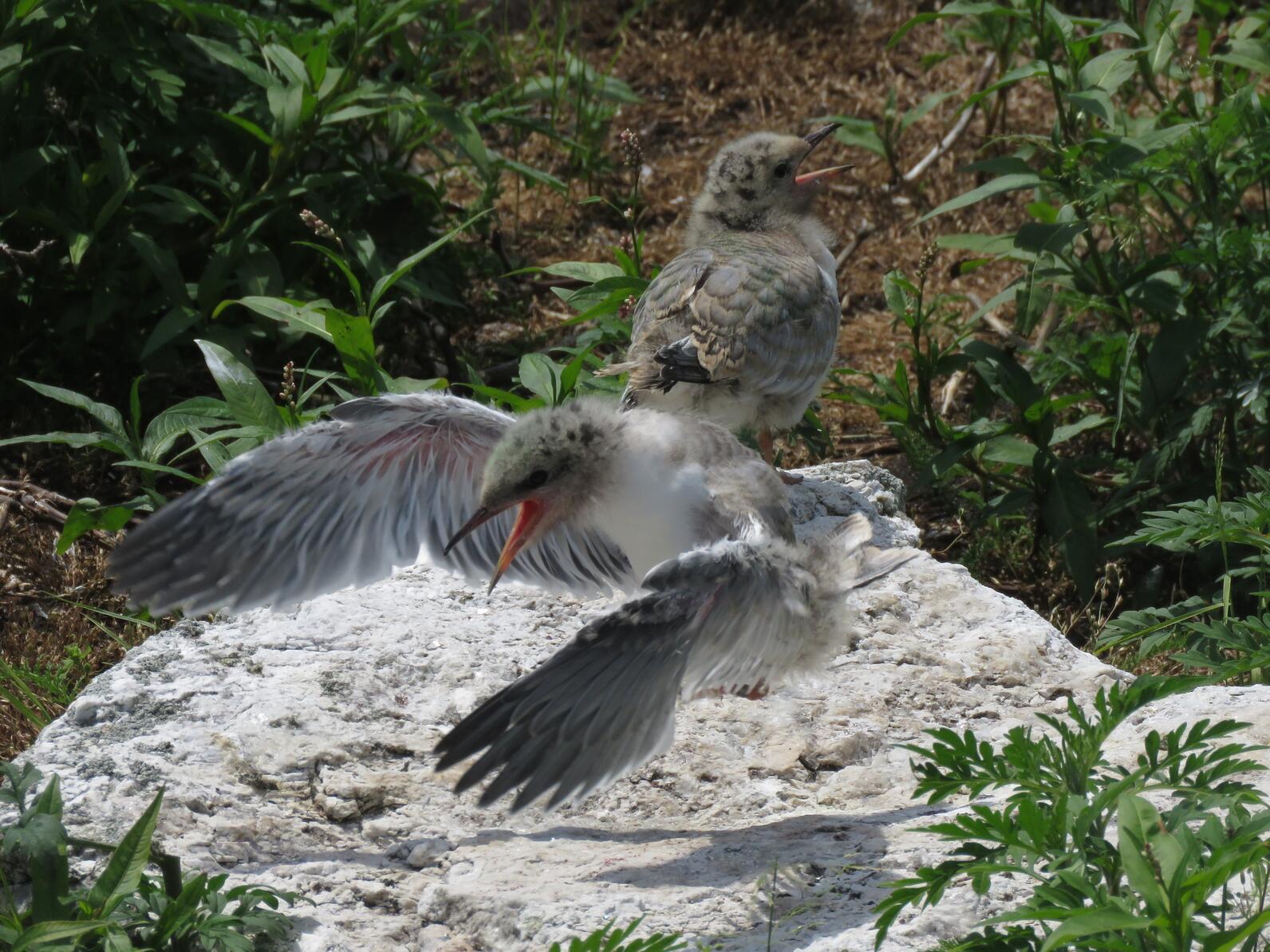
While late hatching stragglers are still being found, older tern chicks are transitioning to fledglings. Even the tiny Least Terns on Stratton Island have begun to take flight. Quite a relief after last year’s Black-crowned Night Heron predation. The research team has taken turns doing night stints and they have surely paid off. Well done!
It’s not unusual for chicks to lose weight right before fledgling, shedding “baby weight” helps these young birds take to the skies. Unfortunately, teams are seeing weight loss in some younger chicks, too. While hake and herring are still holding strong for some feeding studies, mackerel, butterfish, euphausiids, and even insects have made their way into others. There is no doubt this shift is caused by warming waters, as sea surface temperatures reached 65 degrees this past week.
International Guillemot Appreciation Day
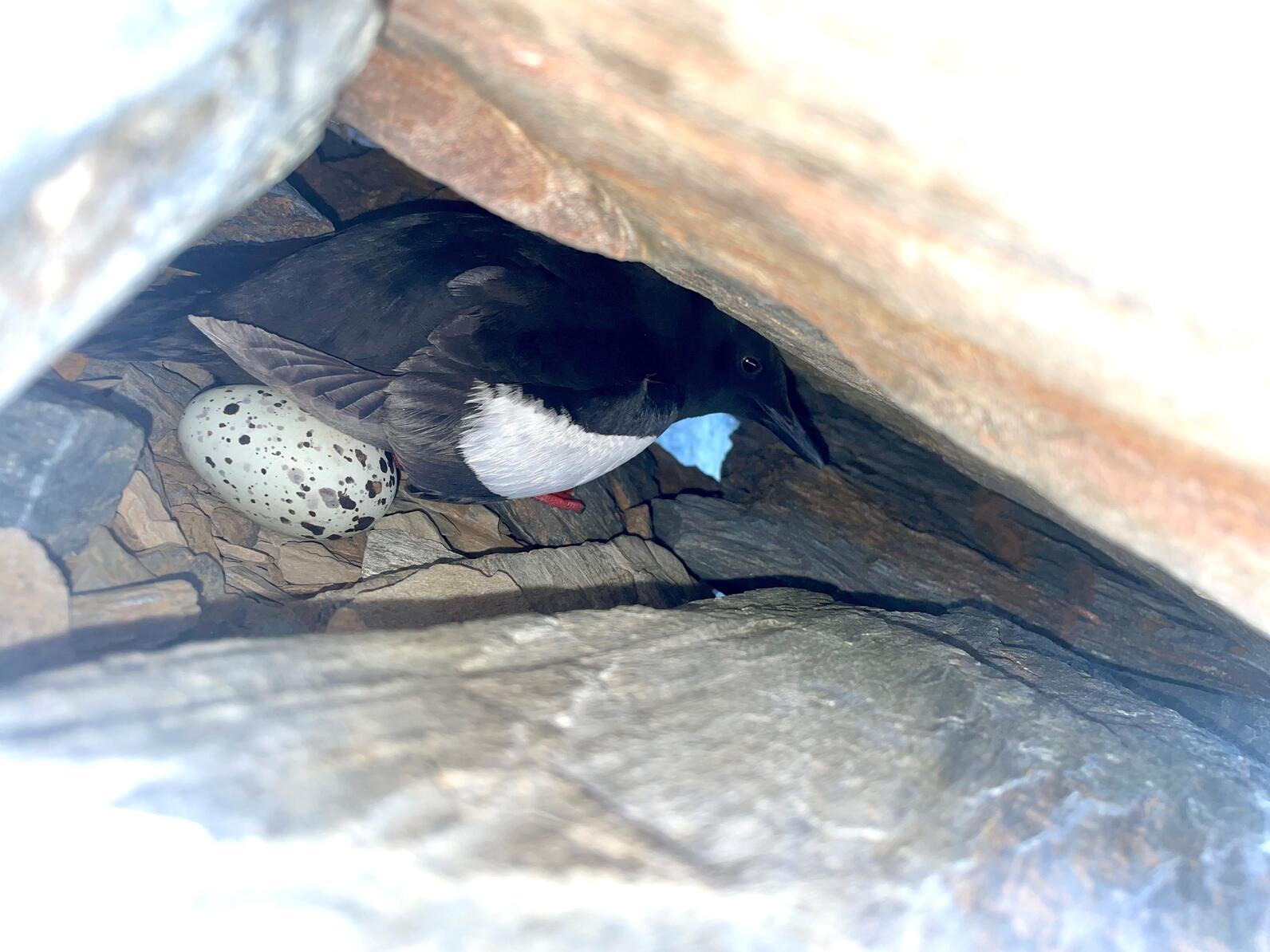
Stratton Island researchers have been anxiously checking in on guillemot burrows. Surely these eggs will become chicks soon! In other “guillie” news, this past week was the celebration of International Guillemot Appreciation Day (June 27). Seabird Institute staff were challenged to create a festive celebration. Songs were written, costumes and brownies were made, illustrations were drawn, there was even a puppet show! The team came together to share their creations and a few laughs on a zoom call at the close of the day. In case you missed it, check out the IGAD fun fact shared as part of the celebration.
Tufted Puffins
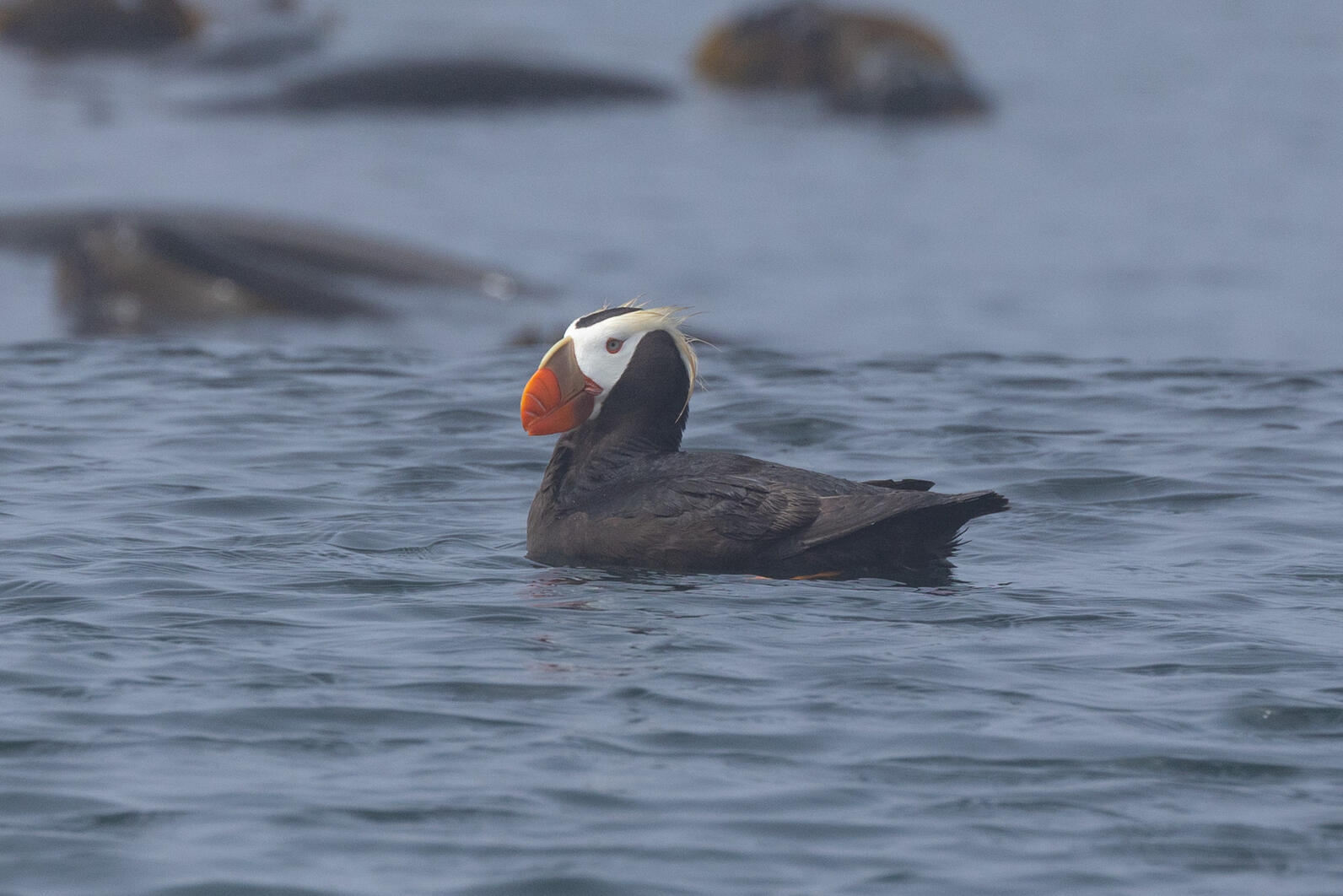
Over on the northern California coast – where Tufted Puffins are now only occasionally sighted – the iconic seabird gained a new flock of ambassadors. Kindergarteners at Jacoby Creek Elementary in Bayside spent the last few days of the school year learning about the species while recreating photographs using a paintbrush, watercolors, and their imagination.
“The minds of kindergartners are endlessly fascinating, but I underestimated what they learned from our relatively simple conservation about Tufted Puffins. I read a few fun facts to them as they were painting, but they were concentrating so hard they didn’t seem to be listening. And then later, I would hear them talking to their parents and they kept sharing all the interesting puffin facts,” said kindergartner teacher, Pamela Ritter.
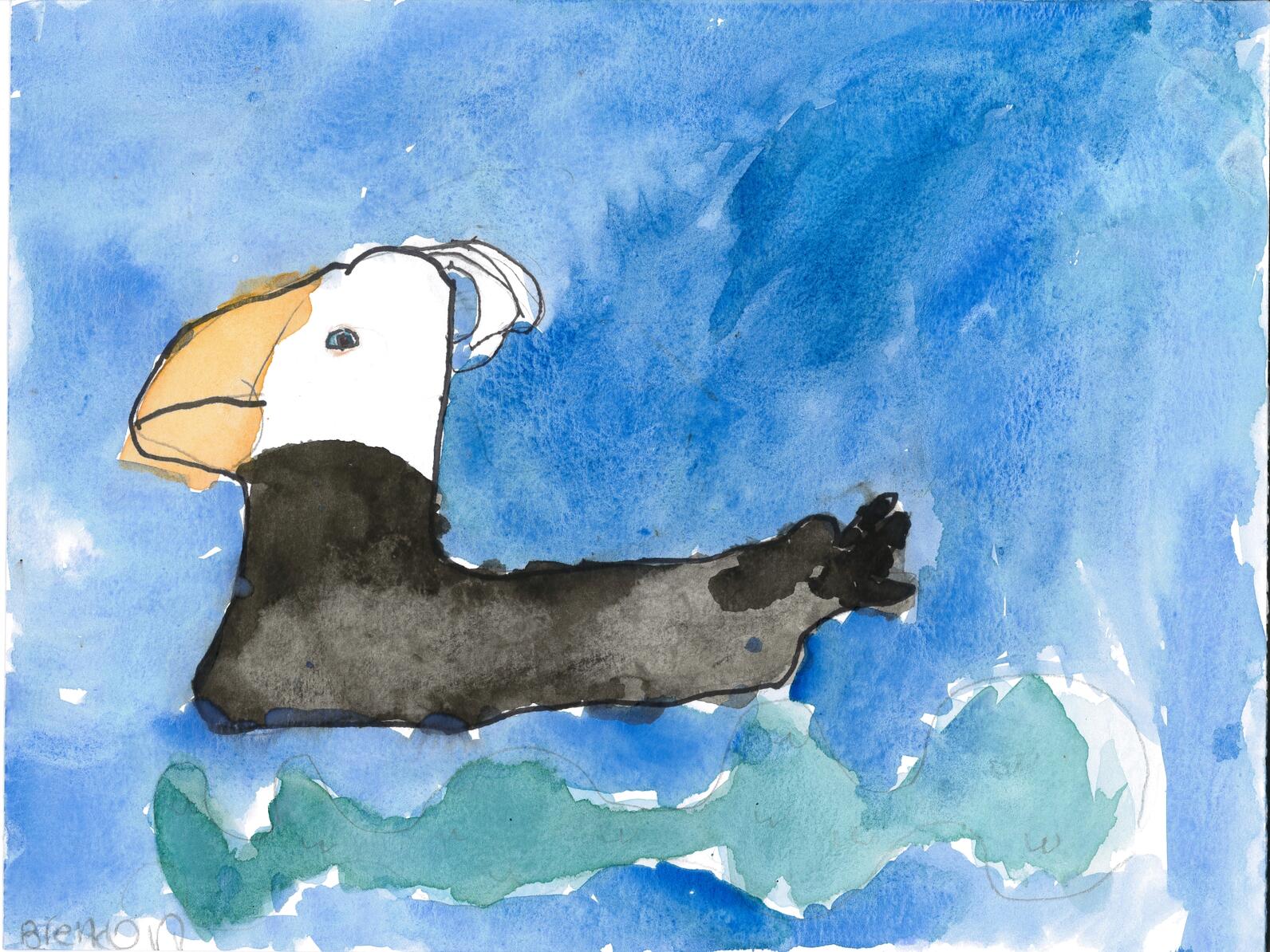
With permission from both the parents and photographers, we have started to share the young artists’ masterpieces on our Instagram and Facebook channels. Check them out!
And, as the new flock puffin protectors head into the summer, biologists in Oregon are also hoping to learn more about Tufted Puffins by employing the use of a drone. Katherine Luscher, Senior Coordinator for Tufted Puffins, and Alayna Lawson, an Oregon State University graduate, recently pitched a project to drone manufacturing company Teledyne FLIR to study puffins on the hard-to-access west coast nesting islands and rocks. In support of gathering more data along the Oregon coast, Teledyne FLIR is providing Audubon the use of a drone equipped with thermal imagining equipment, the ability to fly in high winds, and the power to collect images from a distance that will not disturb the seabirds. The hope is to gather more information about habitat, burrows, burrow occupancy, and ultimately population numbers. The initial test flights will take place in the coming months, with the drone being flown by a certified pilot from the Oregon Department of Fish and Wildlife. If the initial test flights are successful, we will develop a plan to survey more of the active colonies in Oregon next season.
Explore.org
Ama, the plucky on-cam Puffin Burrow puffling, continues to hastily gobble up the fish that Willie and Millie bring back for it, getting more outspoken in its demands. At three weeks old, Ama is about halfway through the time it will spend in the burrow. The puffling has even been seen exploring outside of the rock crevices, poking its head out and peering at the outside world.
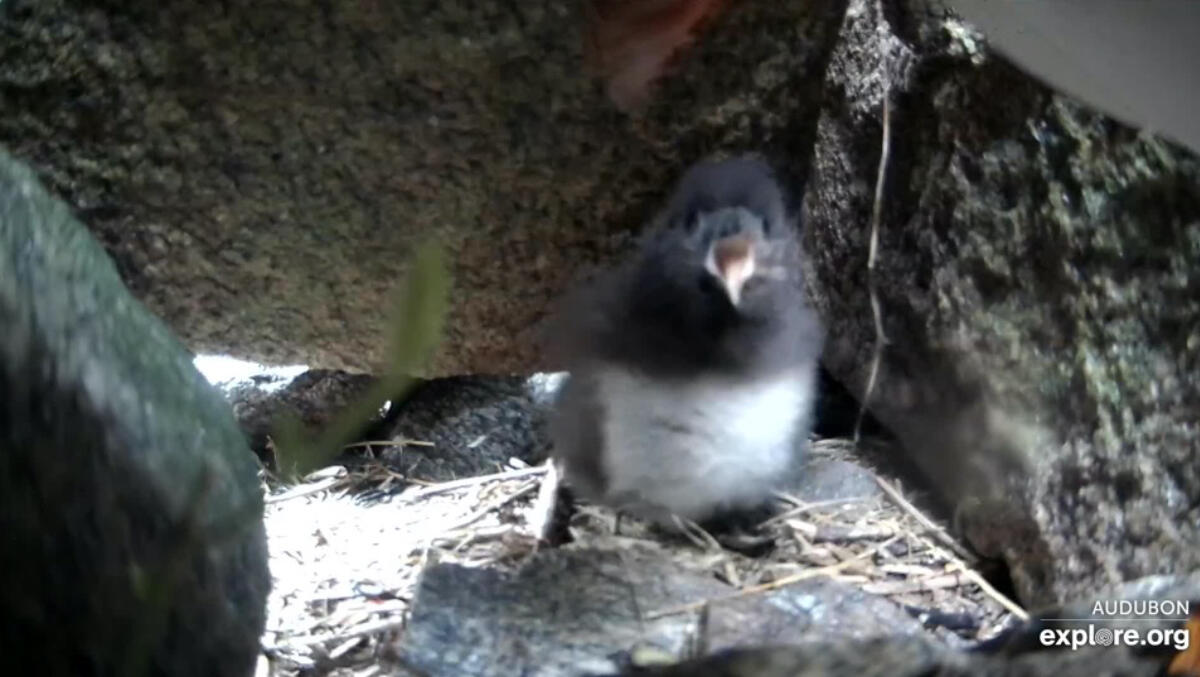
A flurry of feathers, a panicked squeal, then silence in the Guillemot Burrow. This was the scene just before a fluffy tern chick wandered into the burrow, exploring the nooks and crannies of a rock crevice. The likely-inexperienced Black Guillemot pair did not defend their egg against this terrifying threat and the tern chick wandered around unbothered for several minutes.
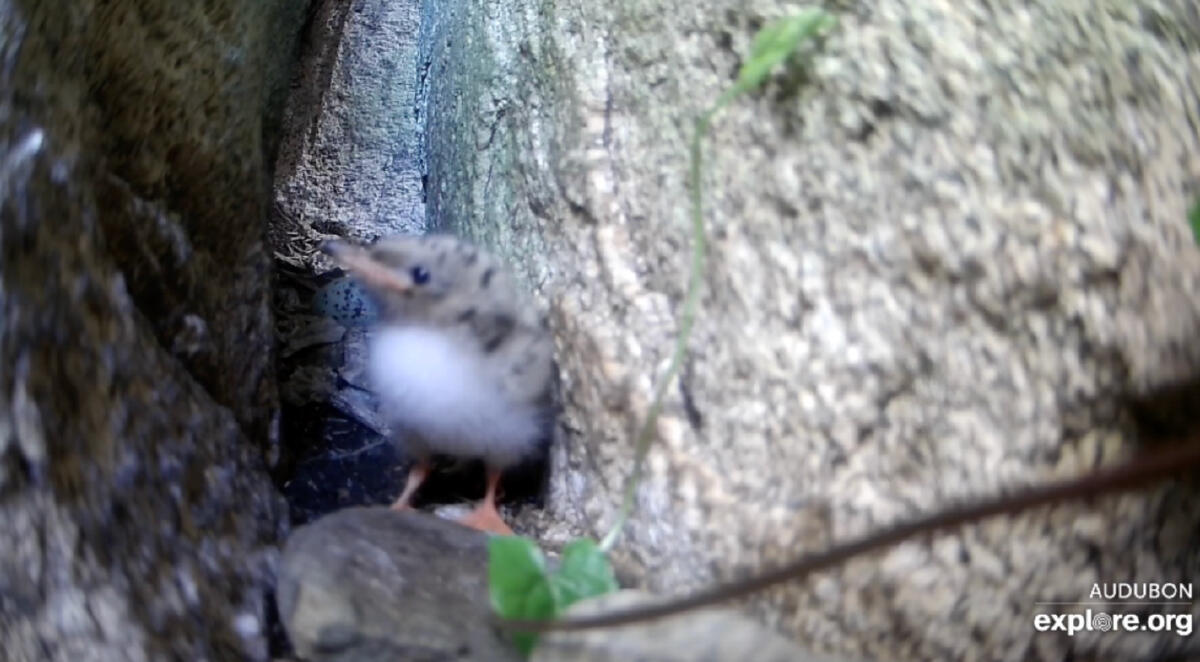
Follow along on explore.org to watch these audacious and exploratory seabirds!
For additional news, please visit the Seabird Island News index page.
Learn about birds and take action
Adopt-A-Puffin
Adopt now and receive a Certificate of Adoption, along with a biography of "your" puffin!
Visitor Center
The Project Puffin Visitor Center (PPVC) is located at 311 Main Street in downtown Rockland, Maine. The center opened its doors officially on July 1, 2006.


